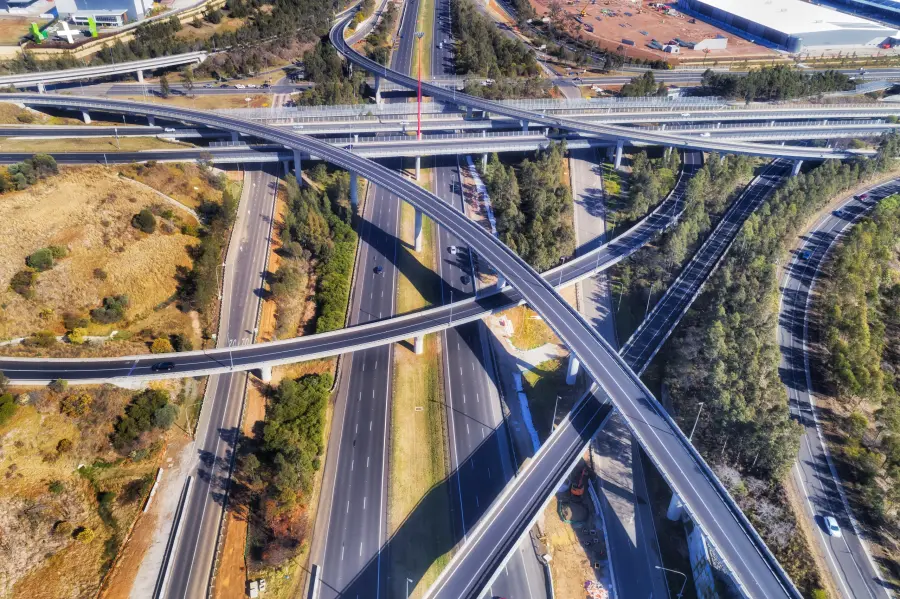On 19 April 2024, Justice Duggan of the Land and Environment Court handed down the long-anticipated judgment in Goldmate Property Luddenham No. 1 Pty Ltd v Transport for NSW [2024] NSWLEC 39.
The judgment follows recent Court of Appeal decisions concerning the characterisation of the "public purpose" in determining market value under the Land Acquisition (Just Terms Compensation) Act 1991 (the Just Terms Act) in Sydney Metro v G & J Drivas Pty Ltd [2024] NSWCA 5 and Coffs Harbour City Council v Noubia Pty Ltd [2024] NSWCA 19.
Key takeaway point
Broadly, the judgment highlights that there are no "clear rules" for characterising the relevant public purpose. While it is the public purpose of the acquiring authority that is relevant, that purpose may be associated with a coordinated cross-Government strategy. It is not necessary to confine the characterisation of the public purpose by reference to the legislation that gives rise to the authority's acquisition power.
Facts
The Applicant owned 31.79 hectares of land at 777-819 Luddenham Road, Luddenham that it had purchased in November 2020 for $33,056,500.
On 19 March 2021, Transport for NSW (TfNSW) issued a proposed acquisition notice (PAN) to acquire part of the land "for the purposes of the Roads Act 1993 in connection with the construction, operation and maintenance of the M12 Motorway”.
On 30 June 2021, TfNSW acquired 14.66 hectares known as Lot 7 and the Applicant landowner retained 17.13 hectares known as Lot 2 as depicted below.

Lot 2 was landlocked as at the date of acquisition. However, there was a stated intention by TfNSW to provide public road access to Lot 2 in the future.
As at the date of acquisition, the land was primarily zoned Enterprise (ENT) under the State Environmental Planning Policy (Western Sydney Aerotropolis) 2020 (Aerotropolis SEPP), prior to which it had been zoned RU2 Rural Landscape.
The primary issue in dispute was whether the public purpose had caused the change in zoning from RU2 to ENT and the consequent increase in market value.
The competing positions on compensation
|
|
Valuer General's determination |
Applicant |
TfNSW |
|
Market Value |
$0 |
$55,437,200 |
$4,000,200 |
|
Disturbance |
$160,116.58 |
$199,527.59 |
$167,979.78 |
|
Total |
$160,116.58 |
$55,636,727.59 |
$4,168,179.78 |
The public purpose and the statutory disregard in determining market value
Under section 56(1)(a) of the Just Terms Act, in determining the "market value" of land, it is necessary to disregard "any increase or decrease in the value of the land caused by the carrying out of, or the proposal to carry out, the public purpose for which the land was acquired."
The public purpose is defined as "any purpose for which land may by law be acquired by compulsory process under this Act."
The Applicant contended that the public purpose needed to be construed having regard to TfNSW's acquisition powers under the Roads Act 1993 and was therefore limited solely to the construction, operation and maintenance of the M12. This narrowly characterised public purpose, when disregarded, would result in the market value being determined on the basis of the actual ENT zoning (a more valuable zone than the RU2 zone).
TfNSW contended for a far broader public purpose, being part of the NSW Government's delivery of the Western Sydney Infrastructure Plan plus rezoning of relevant areas for urban purposes as part of a coordinated State Government response to the announcement of the Western Sydney Airport (WSA). This broader public purpose would mean that the Aerotropolis SEPP as a whole is to be disregarded - and as such the acquired land should be valued based on the underlying RU2 zoning.
Justice Duggan found that the public purpose was part of a coordinated NSW Government-wide project in delivering the WSA. Her Honour found that "the actions of TfNSW in acquiring the land for the purposes of the M12 was in the furtherance of that purpose. The goal for the acquisition of the M12 was not merely to provide vehicular movements to and from the WSA but also to make provision for transport related to the intended land use changes which would facilitate commercial, employment and industrial uses around the WSA to leverage the economic opportunities provided by the WSA. Each element had to work in concert, or the goal (the purpose of such works) would not be achieved…"
Consequently, Justice Duggan found that the public purpose included the rezoning of land around the WSA. As the rezoning was a direct consequence of the public purpose, it needed to be disregarded when determining market value under s 56(1)(a).
Adopting a "before and after" approach, Justice Duggan determined that the market value of the acquired land was $9,523,500 under s 56(1)(a) of the Just Terms Act.
The claim for injurious affection
As noted earlier, the residue land (Lot 2) was landlocked but public road access was intended to be provided. In the intervening period, access to the residue land was affected by the construction zone and required pre-arrangement with the construction contractors. Justice Duggan awarded the Applicant $100,000 compensation under s 55(f) for this inconvenience.
Part of the residue land was also identified in the Aerotropolis SEPP as being under consideration for another road project, the Outer Sydney Orbital (OSO). The Applicant claimed compensation for a reduction in the value of the residue land under s 55(f). Justice Duggan found that the OSO was not caused by the public purpose and therefore any decrease in value caused by the OSO was not compensable.
The dispute over legal costs
The Applicant claimed $54,947 under s 59(1)(a) for legal costs of proceedings commenced in the Supreme Court seeking to compel the Respondent to make an offer of compensation (Mandamus Proceedings).
Section 59(1)(a) provides compensation for "legal costs reasonably incurred by the persons entitled to compensation in connection with the compulsory acquisition of land".
Justice Duggan rejected the claim, finding that the legal costs of the Mandamus Proceedings were not "in connection with the compulsory acquisition" but rather "in connection with the process of making an offer".
Determination
Justice Duggan ultimately awarded the Applicant compensation as follows:
- s 55(a) market value: $9,523,500;
- s 55(f) injurious affection to Residue Land at the Date of Acquisition: $100,000; and
- s 59(1)(a) and (b) disturbance: $137,979.78.
Implications of the decision
The Goldmate decision is the first judgment in a series of proceedings concerning land acquisition near the WSA and is likely to set a precedent for those other cases. While each case must be determined on its facts, the finding of a coordinated public purpose in furtherance of the delivery of infrastructure required for the WSA and surrounding land is likely to be welcomed by acquiring authorities tasked with delivering that infrastructure.
More broadly, the judgment highlights that there are no "clear rules" for characterising the relevant public purpose. While it is the public purpose of the acquiring authority that is relevant, that purpose may be associated with a coordinated cross-Government strategy. It is not necessary to confine the characterisation of the public purpose by reference to the legislation that gives rise to the authority's acquisition power.
If you would like assistance in relation to land use and acquisition law, please contact our Environment & Planning partner, Tom White.
All information on this site is of a general nature only and is not intended to be relied upon as, nor to be a substitute for, specific legal professional advice. No responsibility for the loss occasioned to any person acting on or refraining from action as a result of any material published can be accepted. Lander & Rogers is furthermore committed to providing legal advice and content that is factual, true, practical and understandable. Learn more about our editorial policy.
 Client portal
Client portal












